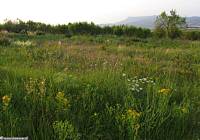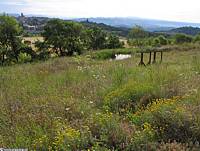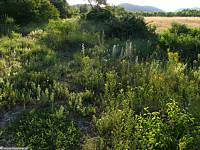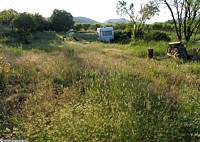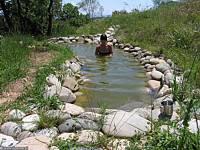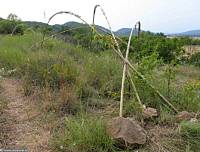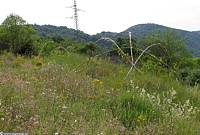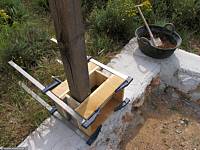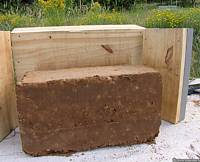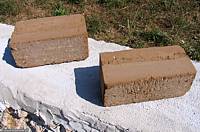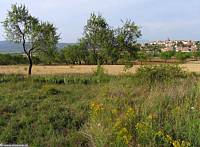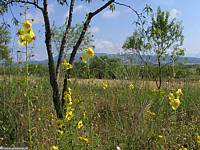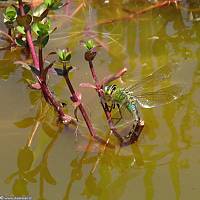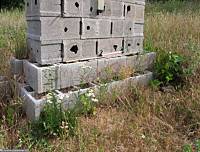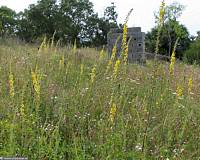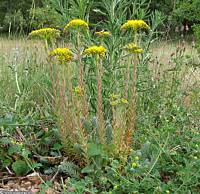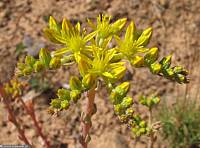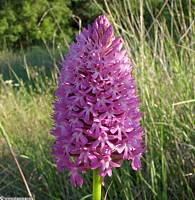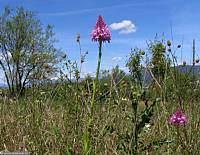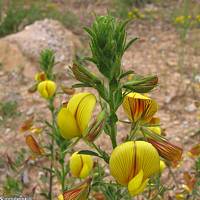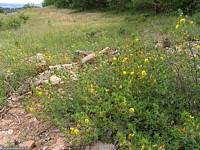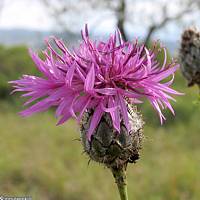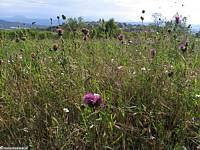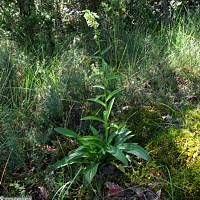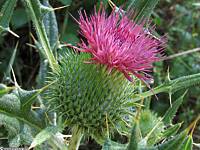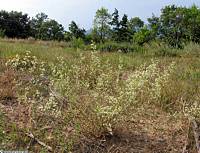|
|
Nature
Switched On
|
|
|
introduction |
2008 June 14 - 29 The vegetation is at its most abundant these days. It is quite difficult to illustrate this extraordinary abundance, complexity and subtleties on a computer screen or even on any reproduction medium whatsoever. It's so much easier to give an impression of an ordinary garden with screaming colours and clear-cut edges.
|
|
|
Flowering Santolina
chamaecyparissus and Orlaya grandiflora. Central eastern terrace, looking east. 15 June 9:01 |
||
|
Lowest terrace. Looking north-west. |
Central terrace looking
north-west. 20 June 20:18 |
|
|
Little by little it's getting hotter and we couldn't resist to have
a bath in the
|
||
|
Blanca having a bath in the lowest pond. |
||
|
The vines I pruned on 24
May are growing very fast and needed urgently some support.
Inspired by a
nice structure I saw at the 2008 World Expo in Zaragoza, I set
about to construct several trellis with Giant reed (Arundo
donax), which grows abundantly near rivers and
irrigation
canals all over the Mediterranean. It is
not so strong as I expected, in fact much weake
|
||
|
Reed trellis, the shapes copying the hills at
the background. |
Trellis made from Giant reed. 26 June 18:48 |
|
|
Having finished the
foundation walls for the garden house, one of the following
steps is the building of the south facing walls with 'rammed earth'.
The fir
Crucial is the absence of any mayor cracks after some days of drying which would indicate a too high clay content. After three days 'baking' in the sun the two blocks I had made looked still intact. |
||
|
Metal clamps, wooden forms and a pole as a
tamper. |
||
|
After taking away the forms. |
After three days drying in the sun. |
|
|
I had to resist an urge to mow down some areas were the vegetation was quite tall and dense. These areas will probably benefit from two cuts in stead of one a year but the vegetation looked so nice with many flowering plants that I will wait for September for a single cut. I also want to spare plants like Verbascum blattaria and Althaea cannabina so that they will be able to produce and spread their seed. |
||
|
On the left the area mown on
31 May on the lowest
terrace. On the right
the unmown area . |
Verbascum blattaria
in the unmown area. Looking north. 27 June 10:42 |
|
|
This creature was quite busy spreading its descendents. It's an Emperor Dragonfly (Anax imperator), one of the biggest Dragonflies and quite common. The females have a characteristic green thorax and abdomen and fly around (alone) with a typically curved body when laying their eggs. On the photograph it is laying eggs on Veronica beccapunga, which I planted some months ago. Its leaves are quite smaller than when planted and this must be a clear indication of the nutrient poor conditions of this rainwater pond. |
||
|
Anax imperator
laying eggs on Veronica beccapunga. 29 June 13:53 |
||
|
More than a year ago I planted this Yarrow (Achillea
millefolium) next to the bio wall. It's is growing well,
probably taking advantage of the half-shade of the wall and started
flowering these days.
|
||
|
The bio wall with the planted Achillea millefolium
and Hedera helix. 26 June18:35 |
||
|
Agrimonia eupatoria
is thriving excepcionally well this year. At the back the bio wall. 26 June18:38 |
||
|
In the following paragraphs a summary of some conspicuous plants flowering these days. Sedum reflexum (=S. rupestre)
was planted all over the terrain in last March and started to flower
half June. It grows spontaneously in the higher Pyrenees on more
acid soils but is doing fine here so far. It will also be used
on the 'green roof' of our future h
|
||
|
Sedum reflexum on the central terrace. Looking south-west. 26 June 18:26 |
Close-up of the
inflorescence of Sedum reflexum. |
|
|
Eight plants of Pyramidal Orchid (Anacamptis
pyramidalis) are showing their spectacular flowers. At the
beginning the flowers actually f
|
||
|
Anacamptis pyramidalis on the central terrace, looking
north. |
The same flower one week later. 20 June 19:56 |
|
|
Ononis natrix has beautiful yellow |
||
|
Close-up of an Ononis natrix 15 June14:47 |
Vegetation dominated by
Ononis natrix. |
|
|
Greater Knapweed (Centaurea scabiosa)
is one of the many Centaureas on the terrain, of which it has
the biggest flowers that never
|
||
|
A patch of Centaurea scabiosa on the
northern central terrace. |
Close-up of Centaurea
scabiosa. 15 June 19:33 |
|
|
Yellow Foxglove (Digitalis lutea) is a
short-lived perennial which was planted last Marc This is a spontaneous newcomer, the formidable Spear Thistle (Cirsium vulgare). Of all the thistles it has the biggest and sharpest thorns and the plant can reach a height of more than 2 metres. |
||
|
Digitalis lutea in the half shade of the oak wood. 27 June11:13 |
||
|
Cirsium vulgare on
the lowest terrace: 27 June 10:51 |
||
|
Much more modest but with surprising decorative effe
|
||
|
Galium fruticescens
on the central terrace with the pond at the background. Looking north. 26 June 19:10 |
||
|
introduction
|
|
